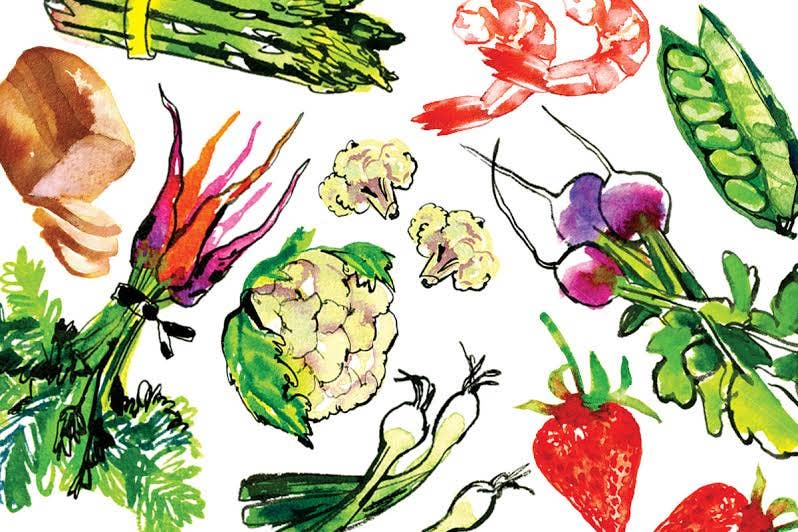
6 Food-Focused Charities
There are more opportunities than ever for making sure that fewer people go hungry during the holidays, and year-round, as organizations evolve to address specific needs and appeal to Americans' desire to know how their donations are being used. We've selected a handful of charities with particularly innovative approaches to combating hunger, promoting sustainable agriculture, and advancing development in regions struggling with malnutrition. You can learn more about these and other food-focused charities, including details of how they allocate donations, at www.guidestar.org. To benefit multiple organizations with a single donation, visit www.networkforgood.org.
America's Second Harvest _(800/771-2303; www.secondhar vest.org) _In 2006, America's Second Harvest, working with more than 200 local charities and city agencies in all 50 states, distributed $576 million in goods and services to more than 80 percent of America's food banks and food rescue organizations. Individual donations of funds, food, and time helped to feed 25 million people without access to adequate nutrition.
**Farm Aid **(800/327-6243; www.farmaid.org) Most people know Farm Aid, founded in 1985 by the musicians John Mellencamp, Willie Nelson, and Neil Young, for its high-profile annual fund-raising concert. But the organization operates year-round, advocating for fair domestic farming policies, giving financial counseling and material support to American farm families in crisis, and offering education in efficient farming methods.
The Food Project (781/259-8621; www.thefoodproject.org) One of the country's more successful urban agriculture initiatives, the Food Project pairs more than a hundred Boston-area teens each year with volunteers who help them farm 31 acres in rural Lincoln, Massachusetts, and on several urban plots in Boston. The project produces 250,000 pounds of organic produce annually for local shelters, farmers' markets, and the organization's Community Supported Agriculture (CSA) program.
**The Full Belly Project **(910/452-0975; www.fullbellyproject.org) Founded in 2003 on the principle that simple agricultural machines can dramatically improve the lives of farmers in developing countries, this charity provides a manually operated nut sheller that processes peanuts and several other types of nuts ten times faster than hands can. That makes no small difference to the half billion people around the world who rely on peanuts as a primary source of protein and income. So far the organization has distributed more than a thousand assembly kits—each one capable of producing a thousand nut shellers—in Central America, the Caribbean, the Western Pacific, and Africa.
Heifer International (800/422-0474; www.heifer.org) This worldwide organization is a leader in supporting grassroots development projects that eventually become self-sustaining. Its best-known program, the Heifer Catalog, allows donors to select the type of livestock their donation will buy, be it goats for families in Indonesia, pigs for villages in Ukraine, or sheep for rural communities in Cameroon. Heifer also provides microloans to small-business ventures in developing countries and training in soil and livestock management.
Share Our Strength (800/969-4767; www.strength.org) This 23-year-old nonprofit has had notable success partnering with corporations like Food Network and American Express to capitalize on Americans' growing interest in how their food is produced. Proceeds from its Taste of the Nation benefits—this year featuring 3,000 chefs in 50 cities—go to local organizations that serve the 12 million American children who need food pantries and other forms of assistance to obtain the nutrition they require. Other initiatives include Operation Frontline, which enlists chefs and nutritionists to lead courses on healthful eating for low-income families, and the Great American Bake Sale, which raises money and awareness through volunteer-led sales of baked goods across the country.
**Giving by the Numbers
**
More than 35 million Americans live in households that don't always have enough food to eat; 852 million people worldwide are chronically undernourished.
About 65 percent of American households with an annual income under $100,000 give to charity. That's more people than those who vote.
By some estimates, every dollar invested in initiatives to reduce malnutrition can yield between $5 and $20 worth of material benefits, in the form of food, income, or shelter.
Each year, Americans give about $290 billion to charitable organizations. There are more than 2,600 food-focused charities nationwide.
Keep Reading
Continue to Next Story










